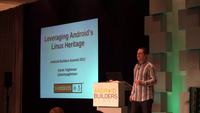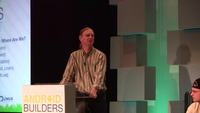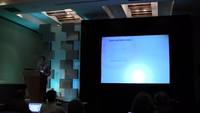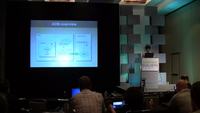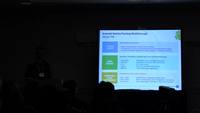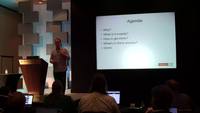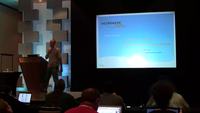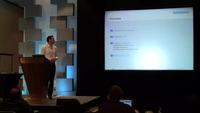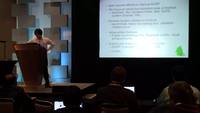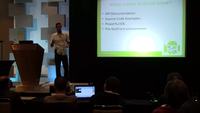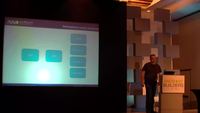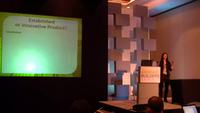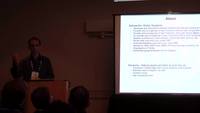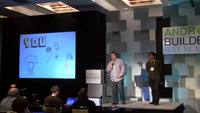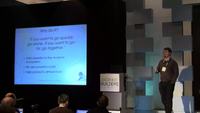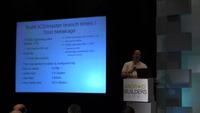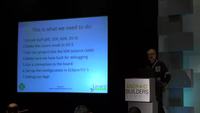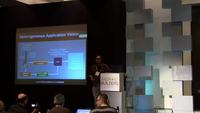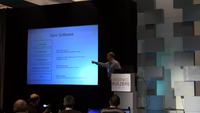The 2012 edition of the Embedded Linux Conference took place on February 15-17th 2012 at Redwood Shores near San Francisco in California. Three engineers of Bootlin attended this conference, and we reported every day our impressions about the talks, see our blog posts for day 1, day 2 and day 3. We have now taken the time to encode all the videos we have recorded during this event, and are proud to distribute them today.
It is worth noting that for the first time, the Linux Foundation was also recording videos of the talks, the Linux Foundation videos are available from video.linux.com, and we included links to these videos below for the different talks.
We hope that those of you who couldn’t attend the conference will enjoy those videos, with many great talks on technical embedded Linux topics.
Jon Corbet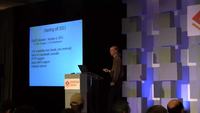
Editor at LWN.net
The Kernel Report
Slides
Linux Foundation video
Bootlin video (53 minutes):
full HD (525M), 450×800 (154M)
Loïc Pallardy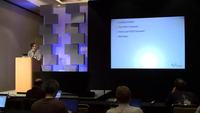
Saving the Power Consumption of the Unused Memory
Slides
Bootlin video (46 minutes):
full HD (378M), 450×800 (125M)
Bernhard Rosenkränzer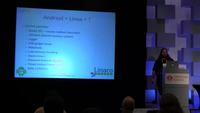
Linaro
What Android and Embedded Linux Can Learn From Each Other
Slides
Linux Foundation video
Bootlin video (40 minutes):
full HD (370M), 450×800 (129M)
Ricardo Salveti de Araujo
Linaro
Ubuntu on ARM: Improvements and Optimizations Done By Linaro
Slides
Linux Foundation video
Bootlin video (46 minutes):
full HD (301M), 450×800 (140M)
Zach Pfeffer
Linaro
Binary Blobs Attack
Slides
Linux Foundation video
Bootlin video (50 minutes):
full HD (486M), 450×800 (157M)
Hisao Munakata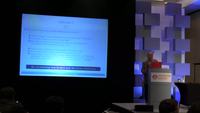
Renesas Electronics
Close Encounters of the Upstream Resource
Slides
Linux Foundation video
Bootlin video (37 minutes):
full HD (394M), 450×800 (121M)
Daniel Hursh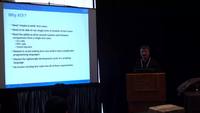
IBM
Open Source Automated Test Framework
Slides
Bootlin video (45 minutes):
full HD (303M), 450×800 (132M)
Saul Wold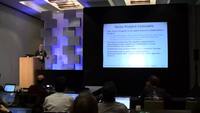
Intel
The Yocto Project Overview and Update
Slides
Linux Foundation video
Bootlin video (54 minutes):
full HD (543M), 450×800 (171M)
Sean Hudson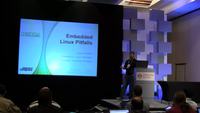
Mentor Graphics, Inc.
Embedded Linux Pitfalls
Slides
Bootlin video (51 minutes):
full HD (483M), 450×800 (176M)
Vincent Guittot
Linaro
Comparing Power Saving Techniques For Multicore ARM Platforms
Slides
Linux Foundation video
Bootlin video (57 minutes):
full HD (307M), 450×800 (154M)
Tim Bird
Sony Network Entertainment
Status of Embedded Linux
Slides
Linux Foundation video
Bootlin video (49 minutes):
full HD (492M), 450×800 (159M)
Bruce Ashfield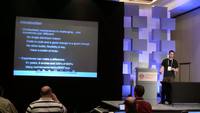
Wind River
A View From the Trenches: Embedded Functionality and How It Impacts Multi-Arch Kernel Maintenance
Slides
Bootlin video (54 minutes):
full HD (741M), 450×800 (222M)
R Durgadoss
Intel
PeakCurrent Management in x86-Based Smartphones
Slides
Linux Foundation video
Bootlin video (50 minutes):
full HD (296M), 450×800 (141M)
Matt Porter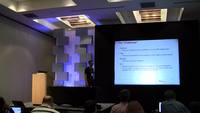
Texas Instruments
Passing Time With SPI Framebuffer Driver
Slides
Bootlin video (54 minutes):
full HD (565M), 450×800 (172M)
Wookey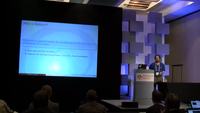
Linaro
Multiarch and Why You Should Care: Running, Installing and Crossbuilding With Multiple Architectures
Slides
Bootlin video (42 minutes):
full HD (453M), 450×800 (143M)
Amit Daniel Kachhap
Linaro/Samsung
A New Simplified Thermal Framework For ARM Platforms
Slides
Linux Foundation video
Bootlin video (41 minutes):
full HD (226M), 450×800 (115M)
Tsugikazu Shibata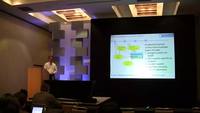
NEC
On The Road: To Provide the Long-Term Stable Linux For The Industry
Slides
Linux Foundation video
Bootlin video (32 minutes):
full HD (304M), 450×800 (95M)
Thomas P. Abraham
Samsung Electronics
Experiences With Device Tree Support Development For ARM-Based SOC’s
Slides
Bootlin video (44 minutes):
full HD (509M), 450×800 (155M)
Paul E. McKenney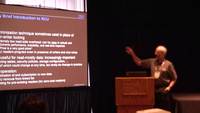
IBM
Making RCU Safe For Battery-Powered Devices
Slides
Linux Foundation video
Bootlin video (52 minutes):
full HD (506M), 450×800 (186M)
Mike Anderson
Chief Technology Officer at The PTR Group
The Internet of Things
Slides
Linux Foundation video
Bootlin video (50 minutes):
full HD (580M), 450×800 (186M)
Thomas Petazzoni
Bootlin
Buildroot: A Nice, Simple, and Efficient Embedded Linux Build System
Slides
Linux Foundation video
Bootlin video (56 minutes):
full HD (594M), 450×800 (182M)
Steven Rostedt
Red Hat
Automated Testing with ktest.pl (Embedded Edition)
Slides
Linux Foundation video
Bootlin video (102 minutes):
full HD (1,2G), 450×800 (354M)
David VomLehn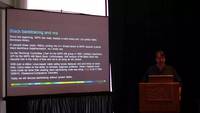
Cisco
Intricacies of a MIPS Stack Backtrace Implementation
Slides
Linux Foundation video
Bootlin video (52 minutes):
full HD (345M), 450×800 (153M)
Edward Hervey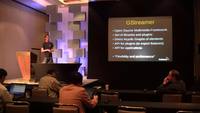
Collabora
GStreamer 1.0: No Longer Compromise Flexibility For Performance
Slides
Linux Foundation video
Bootlin video (49 minutes):
full HD (540M), 450×800 (174M)
Tim Bird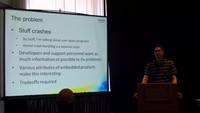
Sony Network Entertainment
Embedded-Appropriate Crash Handling in Linux
Slides
Linux Foundation video
Bootlin video (49 minutes):
full HD (292M), 450×800 (142M)
Arnd Bergmann
Linaro
ARM Subarchitecture Status
Slides
Linux Foundation video
Bootlin video (49 minutes):
full HD (416M), 450×800 (140M)
Mark Gisi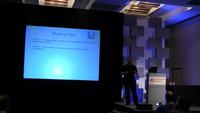
Wind River Systems
The Power of SPDX – Sharing Critical Licensing Information Within a Linux Device Supply Chain
Linux Foundation video
Bootlin video (49 minutes):
full HD (498M), 450×800 (164M)
Yoshitake Kobayashi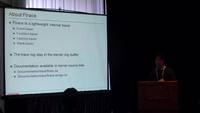
Toshiba
Ineffective and Effective Ways To Find Out Latency Bottlenecks With Ftrace
Slides
Linux Foundation video
Bootlin video (37 minutes):
full HD (251M), 450×800 (108M)
Ohad Ben-Cohen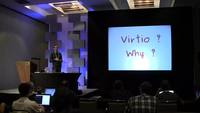
Wizery / Texas Instruments
Using virtio to Talk With Remote Processors
Slides
Linux Foundation video
Bootlin video (54 minutes):
full HD (582M), 450×800 (182M)
Elizabeth Flanagan
Intel
Embedded License Compliance Patterns and Antipatterns
Linux Foundation video
Bootlin video (44 minutes):
full HD (391M), 450×800 (144M)
David Anders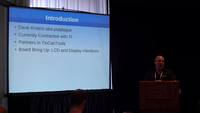
Texas Instruments
Board Bringup: LCD and Display Interfaces
Slides
Linux Foundation video
Bootlin video (40 minutes):
full HD (207M), 450×800 (113M)
Rob Clark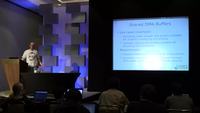
Texas Instruments
DMA Buffer Sharing: An Introduction
Slides
Linux Foundation video
Bootlin video (35 minutes):
full HD (306M), 450×800 (100M)
Ken Tough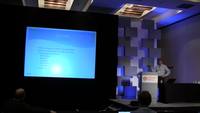
Intrinsyc
Linux on eMMC: Optimizing For Performance
Slides
Linux Foundation video
Bootlin video (52 minutes):
full HD (468M), 450×800 (165M)
Paul Larson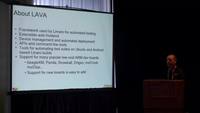
Linaro
LAVA Project Update
Slides
Linux Foundation video
Bootlin video (52 minutes):
full HD (366M), 450×800 (159M)
Frank Rowand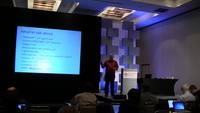
Sony Network Entertainment
Real Time (BoFs)
Slides
Bootlin video (77 minutes):
full HD (924M), 450×800 (288M)
Mike Turquette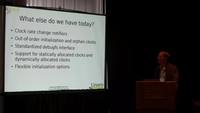
Texas Instruments
Common Clock Framework (BoFs)
Slides
Bootlin video (53 minutes):
full HD (333M), 450×800 (148M)
Hunyue Yau
HY Research LLC
Userland Tools and Techniques For Linux Board Bring-Up and Systems Integration
Slides
Linux Foundation video
Bootlin video (51 minutes):
full HD (407M), 450×800 (136M)
Matt Weber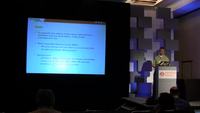
Rockwell Collins Inc.
Optimizing the Embedded Platform Using OpenCV
Slides
Linux Foundation video
Bootlin video (37 minutes):
full HD (388M), 450×800 (125M)
Greg Ungerer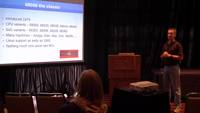
McAfee
M68K: Life in the Old Architecture
Slides
Linux Foundation video
Bootlin video (46 minutes):
full HD (452M), 450×800 (166M)
Gary Bisson
Adeneo Embedded
Useful USB Gadgets on Linux
Slides
Linux Foundation video
Bootlin video (43 minutes):
full HD (402M), 450×800 (129M)
Jason Kridner
Texas Instruments
GUIs: Coming To Uncommon Goods Near You
Slides
Linux Foundation video
Bootlin video (52 minutes):
full HD (476M), 450×800 (166M)
Mike Anderson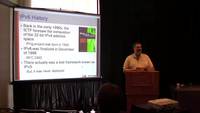
The PTR Group
Adapting Your Network Code For IPv6 Support
Slides
Linux Foundation video
Bootlin video (63 minutes):
full HD (485M), 450×800 (216M)
Koen Kooi
The Angstrom Distribution
Producing the Beaglebone and Supporting It
Linux Foundation video
Bootlin video (42 minutes):
full HD (398M), 450×800 (126M)
Danny Bennett
basysKom GmbH
HTML5 in a Plasma-Active World
Slides
Linux Foundation video
Bootlin video (34 minutes):
full HD (258M), 450×800 (75M)
Marcin Mielczarczyk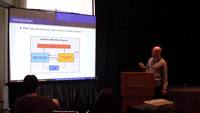
Tieto
Getting the First Open Source GSM Stack in Linux
Slides
Linux Foundation video
Bootlin video (54 minutes):
full HD (439M), 450×800 (178M)
Pierre Tardy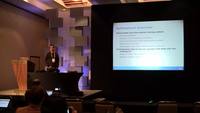
Intel
PyTimechart Practical
Slides
Linux Foundation video
Bootlin video (32 minutes):
full HD (260M), 450×800 (86M)
Linus Walleij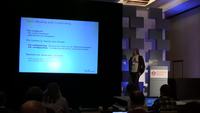
ST-Ericsson
Pin Control Subsystem Overview
Slides
Linux Foundation video
Bootlin video (60 minutes):
full HD (638M), 450×800 (200M)
Khem Raj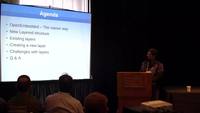
OpenEmbedded Project
OpenEmbedded – A Layered Approach
Slides
Linux Foundation video
Bootlin video (39 minutes):
full HD (227M), 450×800 (108M)
Lucas De Marchi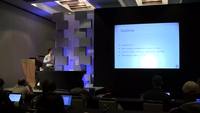
ProFUSION Embedded Systems
Managing Kernel Modules With kmod
Slides
Linux Foundation video
Bootlin video (46 minutes):
full HD (443M), 450×800 (140M)
Jean Pihet
NewOldBits
A New Model for the System and Devices Latency
Slides
Bootlin video (49 minutes):
full HD (431M), 450×800 (146M)
 After months of preparation, and after completing our first Android system development training session, we are proud to release our complete training materials under the Creative Commons Attribution – Share Alike 3.0 license.
After months of preparation, and after completing our first Android system development training session, we are proud to release our complete training materials under the Creative Commons Attribution – Share Alike 3.0 license. Practical labs are conducted on the Devkit8000 embedded board from Embest, with a TI OMAP3 CPU and an LCD touchscreen. As we use Linaro Android in our labs, it should be relatively easy to make these labs on other development boards with a Linaro supported CPU (TI OMAP, Freescale i.MX53 and i.MX6, ST Ericsson Nova and Samsung Exynos).
Practical labs are conducted on the Devkit8000 embedded board from Embest, with a TI OMAP3 CPU and an LCD touchscreen. As we use Linaro Android in our labs, it should be relatively easy to make these labs on other development boards with a Linaro supported CPU (TI OMAP, Freescale i.MX53 and i.MX6, ST Ericsson Nova and Samsung Exynos).




















































